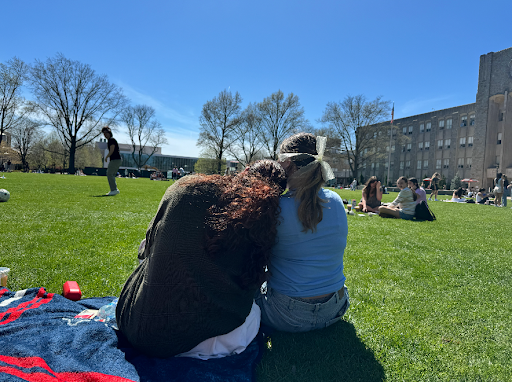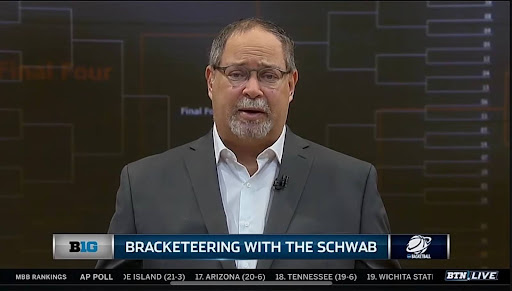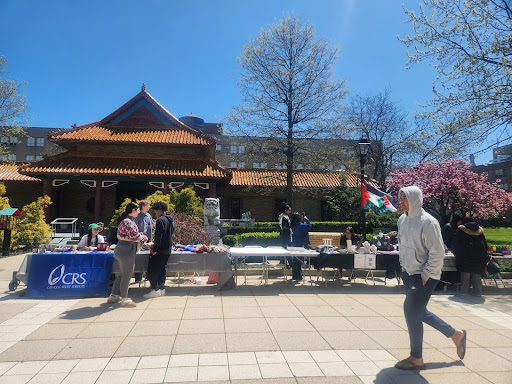Walk through the Marillac Hall Cafeteria on any given day at any given time, and you may notice a trend. Usually, at least three to four tables can be found engaging in an activity that has come to be a major part of college life, playing cards.
Although students are not allowed to gamble in Marillac, the University cannot keep them from having “just-for-fun” card games. Most students who were asked claimed that they do not play for money inside Marillac.
“I don’t gamble in school,” said John Nieves, a junior computer science major, who was playing the card game Chinese poker with his friends.
Nieves, however, did admit to playing poker for money with friends and online.
Students at another table, who were playing 500 rummy, said that they were playing “right now, for fun,” but one of them, who declined to be named, admitted that “we do play for money sometimes [in Marillac].” He said that the group usually plays some sort of card game at least once a day in the cafeteria.
“S.X.,” a freshman Event Management worker, said that while working in the Marillac cafeteria, he always notices “a few groups” playing cards. He added that “It’s my job to make sure they don’t play for money.” He said that if he does see students gambling, he tells them of the University’s rules against it and asks them to stop. If they do not, he reports the incident to his superiors in Student Life and Event Management.
However, the gambling by students at St. John’s is not limited to the card games in Marillac Hall.
“I’ll gamble on anything,” said one student who wished not to be identified. “Sports, poker, you name it.”
He said that he usually gambles at least once a month.
Online poker, although a relatively new phenomenon, has become one of the most popular forms of on-campus gambling, providing a way for students to practice their games, pass the time, and, if they are lucky, win some money. However, it also is the source of some of the biggest horror-stories among college students.
In December, Lehigh University sophomore Greg Hogan made headlines when he robbed a bank in order to pay his online poker debt of more than $5,000. Hogan may have been the most extreme and attention-grabbing case of problem-gambling in college, but he is not alone.
A study released in Sept. 2005 by the University of Pennsylvania’s Annenberg Public Policy Center reported that 14.2 percent of young people ages 14 to 22 gambled online at least once a month (19.6 percent of males in that range) and that 54.5 percent of young people who gambled weekly showed common signs of problem gambling.
The report said that statistics for offline gambling were even higher, with 30.1 percent overall and 41.6 percent of males saying that they played cards for money at least once a month.
Ruth DeRosa, a counselor at St. John’s Counseling Center, said that, although she does not know exactly how big of a problem gambling is at St. John’s, she is aware that it has become a major problem across the country.
“So far this year, I have not had somebody come in with a gambling addiction,” DeRosa said, “but that’s not to say that people who have come in don’t exhibit addictive gambling patterns.”
DeRosa said that if a student did come to the Counseling Center for help with a gambling problem, she would treat it the same way she would any addiction.
“With any type of addiction, you need to remove yourself from the environment that feeds the addictive behaviors,” she said.
She also said that people with problems can find help at the New York State Office of Alcoholism and Substance Abuse Services (OASAS), which has a department that deals specifically with pathological gambling. Information on OASAS can be found on its Web site, www.oasas.state.ny.us.
DeRosa also said that one of the best weapons against problems like this is education, something the University could help with.
“We could do a screening for people who feel that they might have a gambling addiction- [and give] education about gambling as an addictive pattern and what that addictive pattern looks like,” DeRosa said.
Some symptoms of problem gambling, according to the Annenberg report, are a preoccupying desire to gamble, over-spending while gambling, tolerance of the gambling habit and withdrawal when the person is not able to gamble for a period of time. The New York Council on Problem Gambling helpline can be reached at 1-800-437-1611.

















